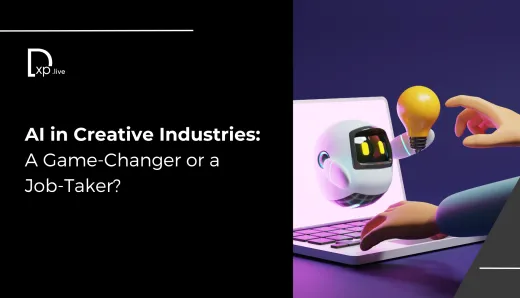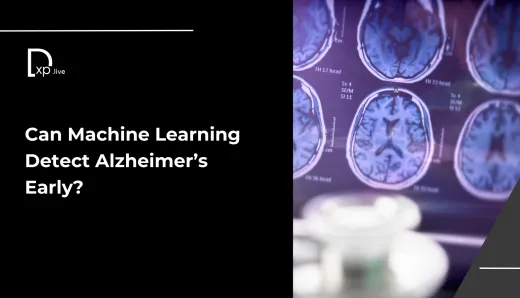Cybersecurity Threats in Agri-Food Sector

As the agri-food sector rides the wave of technological advancements, embracing automation, artificial intelligence (AI), and cloud-based systems to boost efficiency and output, a hidden danger lurks in the background—cyberattacks. The integration of AI-driven tools and interconnected devices has undoubtedly revolutionized farming and food production, but it has also opened the door to a surge in cyber threats, exposing critical vulnerabilities in an industry that often underestimates the importance of cybersecurity. The implications are severe, threatening not just financial losses but also food security and public safety.
In an era where cyberattacks are evolving in complexity, the agriculture sector ranks as the seventh most targeted industry in the United States. With ransomware, data breaches, and foreign malware attacks becoming more frequent, food producers, farmers, and the entire supply chain are at significant risk. Yet, many of the technologies driving this transformation were not designed to defend against the sophisticated cyber threats of today.
The Rising Threat of Cyberattacks in the Agriculture Sector
The U.S. agriculture industry has become increasingly automated, with AI systems managing farms, GPS-powered devices overseeing crops, and cloud-based platforms optimizing processes. From drone-assisted crop monitoring to robotic feeding systems for livestock, the benefits of technology are clear. However, with each new tool comes a new set of cybersecurity challenges. Many of the systems in use were designed long before cybersecurity became a serious consideration, leaving massive gaps that hackers are more than willing to exploit.
As Cory Brandolini, co-founder of Railtown, points out, “We’re seeing robotic systems managing farms, automated feeding systems for livestock, and AI-based tools optimizing crop yields. But all this automation brings significant cyber risk.” The lack of attention to legacy software systems, which were never meant to be part of globally connected networks, exacerbates this risk. For example, hackers could manipulate vital aspects of farming operations—altering feeding schedules for livestock or changing storage temperatures for perishable goods—leading to financial losses and food shortages.
Cybersecurity Lags Behind Technological Advancements
While the digital transformation of the agri-food sector is moving at lightning speed, cybersecurity measures are woefully inadequate. A 2019 UK government report revealed that the agriculture sector spends significantly less on cybersecurity than industries like finance or insurance. This disparity is echoed in the U.S., where farmers and producers are often unfamiliar with the extent of cyber risks they face. The reality is that as cyberattacks grow more sophisticated, the agriculture sector is becoming a prime target due to its critical role in feeding populations and its reliance on aging, unsecured technology.
Cybercriminals are capitalizing on this lack of preparedness, as demonstrated by the rise of ransomware attacks in recent years. In 2021 alone, major U.S. agricultural companies such as New Cooperative and Schreiber Foods fell victim to cyberattacks that disrupted their operations for days. In the case of JBS, the world’s largest meat producer, a ransomware attack forced the closure of all its U.S. beef plants, impacting nearly one-fifth of the country’s meat supply.
The agriculture sector's dependence on time-sensitive operations makes it especially vulnerable. Any disruption in planting, harvesting, or processing could result in catastrophic delays, financial losses, and food shortages. According to the Food and Agriculture-Information Sharing and Analysis Center (Food and Ag-ISAC), downtime caused by a cyberattack could lead to missed planting or harvesting windows, triggering a chain reaction of inefficiencies across the food supply chain.
How AI Boosts Cyber Defenses
While cyberattacks are becoming more sophisticated, so too are the tools available to combat them. Artificial intelligence is emerging as a game-changer in the fight against cyber threats in the agri-food sector. With its ability to monitor systems in real-time, identify vulnerabilities, and predict potential attacks, AI offers a robust solution to securing critical systems. AI-powered platforms like Railtown’s "Conductor" are designed to detect and correct vulnerabilities in real time, helping to prevent security breaches before they escalate into full-blown crises.
Government Action
Recognizing the growing threat, the U.S. government has taken steps to address cybersecurity vulnerabilities in the agriculture sector. The introduction of the Farm, Food, and National Security Act of 2024 is a clear indication that cybersecurity is now a national priority. The Act mandates the assessment of cyber risks in precision agriculture and the broader food supply chain. It also incorporates provisions for cross-sector exercises, enabling farmers and producers to prepare for potential disruptions and emergencies.
While government intervention is crucial, the responsibility also lies with the agriculture industry itself. As cyber threats continue to evolve, the cost of inaction could lead to not only financial ruin but also severe consequences for food security.
The Critical Need for Cybersecurity
The agri-food sector's reliance on interconnected systems and AI-driven tools will only deepen in the coming years. This reliance, however, must be matched with robust cybersecurity measures to safeguard against growing threats. The stakes are high—cyberattacks on the food supply chain could lead to more than just financial losses; they could disrupt global food systems and result in widespread shortages.
Special Agent Gene Kowel from the FBI emphasized the growing complexity of these threats during the Agriculture Threats Symposium in Nebraska. “The cyber risk and national security threat to farms, ranches, and food processing facilities is growing exponentially,” Kowel stated, highlighting the urgent need for awareness and action across the sector.
Farmers, producers, and food processors must take basic cybersecurity hygiene practices seriously, from multi-factor authentication to system awareness. Failure to do so could result in devastating consequences, not only for businesses but for global food security. The interconnected nature of today’s supply chains means that a cyberattack in one part of the world could have ripple effects across the globe, impacting millions of lives.
Securing the Future of Agriculture
The digital transformation of the agri-food sector holds tremendous promise for increasing efficiency and output, but it also introduces significant cybersecurity challenges. As the sector continues to embrace AI-driven tools and interconnected systems, cybersecurity must become a top priority. The vulnerabilities within legacy systems, coupled with the sophistication of modern cyber threats, require a proactive approach that includes both AI-driven solutions and fundamental cybersecurity practices.
The future of food security hinges on the industry’s ability to protect itself from cyberattacks. As technology continues to revolutionize agriculture, companies must invest in their defenses or risk facing not only financial ruin but also the potential collapse of global food systems. Now is the time to take action—before the next major cyberattack strikes.
Stay ahead of cybersecurity threats in the agri-food sector by implementing AI-driven solutions that safeguard your operations. Visit our website for such insights to learn more about how to secure your future in this increasingly digital world.




